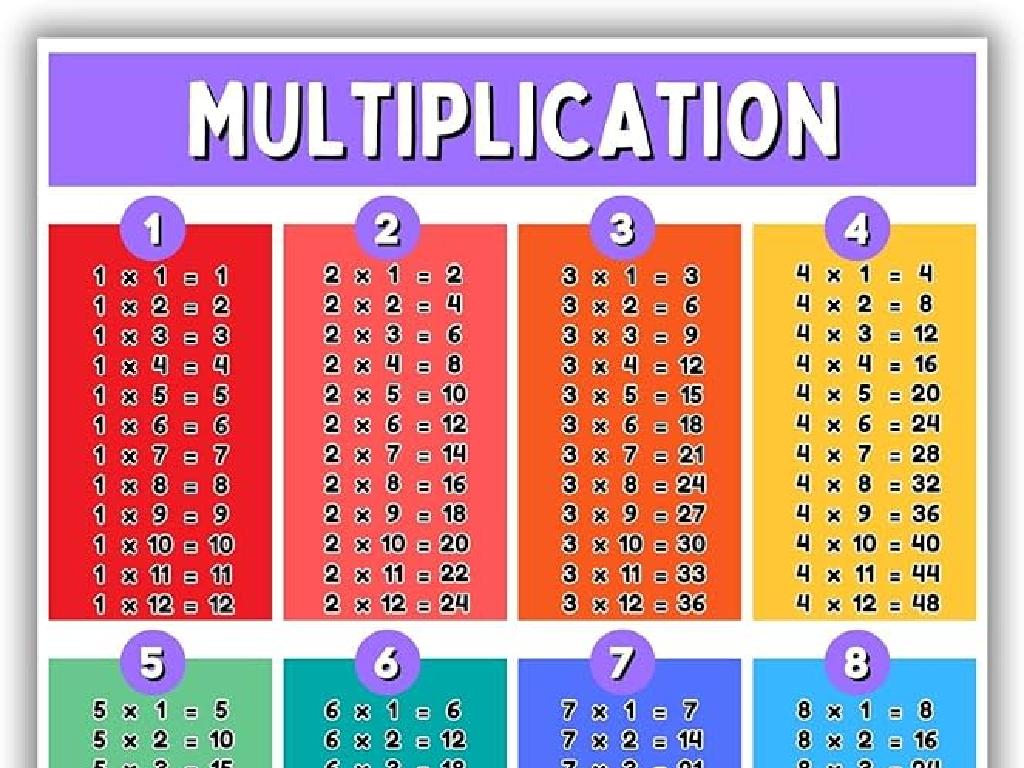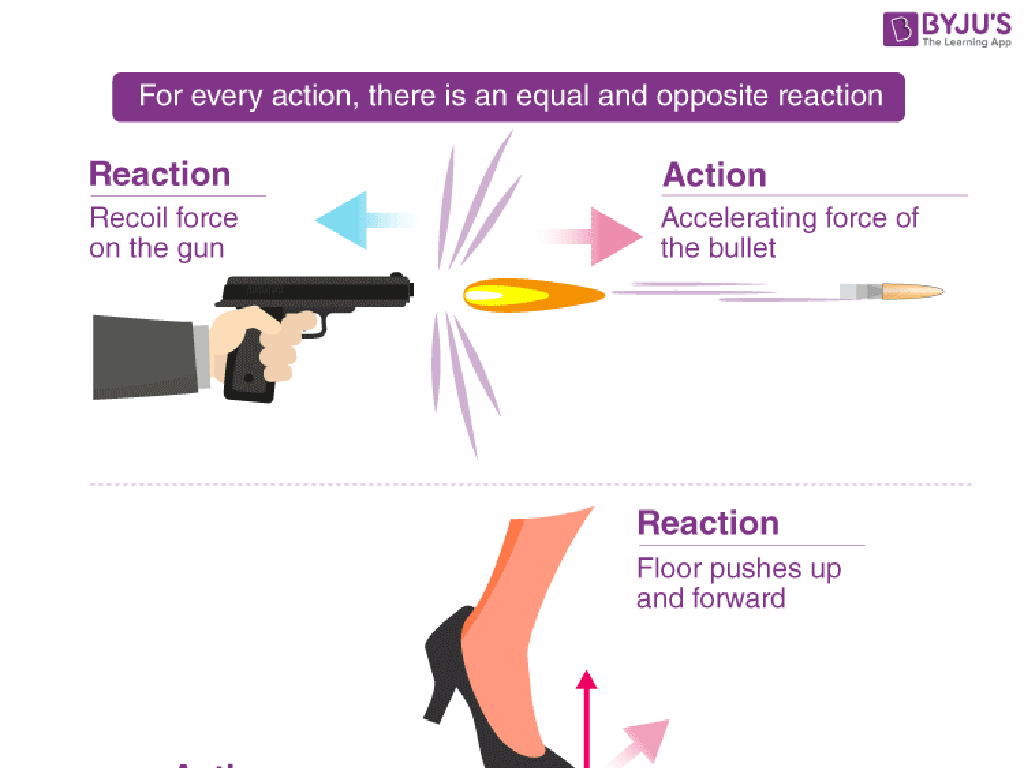Division With Decimal Quotients
Subject: Math
Grade: Fifth grade
Topic: Divide Decimals
Please LOG IN to download the presentation. Access is available to registered users only.
View More Content
Understanding Division with Decimals
– What is decimal division?
– Dividing numbers with decimal points
– Importance in daily life
– Used in money, measurements, etc.
– Examples of decimal division
– Splitting a bill, measuring ingredients
– Practice problems
|
This slide introduces students to the concept of division when it involves decimals, which is a vital skill in mathematics. Decimal division is simply dividing numbers that have decimal points. Emphasize the practicality of decimal division in everyday life, such as when dealing with money or cooking measurements. Provide real-world examples like dividing a restaurant bill among friends or dividing a liter of juice into smaller portions. Encourage students to think of other examples where they might need to use decimal division. Conclude with practice problems to solidify their understanding. The goal is to make students comfortable with the concept and to understand its usefulness outside of the classroom.
Review: Understanding Division
– Recap division fundamentals
– Division is splitting into equal parts or groups
– Division: sharing/grouping concept
– Imagine dividing pizza slices among friends
– Solve simple division problems
– For example, 20 ÷ 4 = 5. What does this mean?
– Practice without decimals first
|
Begin the lesson with a quick review of what division is, ensuring that students recall that it’s a method of distributing a number into equal parts. Use relatable examples like sharing food or grouping objects to solidify their understanding of division as a concept. Present simple division problems that they can solve without the complexity of decimals to build confidence. This foundation is crucial before introducing decimals into division problems. Encourage students to think of division in terms of real-life scenarios to make the concept more tangible. After the review, check for understanding by asking students to solve a few problems and explain the process in their own words.
Introducing Decimals in Division
– Understanding decimals
– Decimals represent parts of a whole, like cents in a dollar.
– Decimals in daily life
– Find decimals in money, measurements, and time.
– Comparing decimals and whole numbers
– Decimals are not whole numbers; they have values less than one.
– Practice with decimal division
|
This slide introduces the concept of decimals, which are a fundamental part of division when dealing with non-whole numbers. Explain that decimals are a way of representing fractions in a more precise manner, often used in various aspects of daily life such as currency, measurements, and timekeeping. Highlight the difference between whole numbers and decimals, emphasizing that decimals show values smaller than one whole. Engage the class with examples of dividing whole numbers resulting in decimal quotients and provide practice problems to solidify their understanding. Encourage students to think of situations where they encounter decimals and to share their thoughts.
Dividing Whole Numbers by Decimals
– Steps to divide by a decimal
– Move the decimal point in the divisor to the right to make it a whole number. Do the same with the dividend.
– Use place value for easy division
– Understanding place value helps in aligning the decimal points correctly.
– Example: Divide 25 by 0.5
– 25 ÷ 0.5 becomes 250 ÷ 5, which equals 50.
|
This slide introduces the concept of dividing whole numbers by decimals. Start by explaining the process of moving the decimal point to the right in both the divisor and the dividend until the divisor is a whole number. Emphasize the importance of place value knowledge to ensure the decimal point in the quotient is placed correctly. Use the example 25 ÷ 0.5 to illustrate the concept, showing step-by-step how to convert it to an easier problem, 250 ÷ 5, and solve it to get the answer 50. Encourage students to practice with additional examples and ensure they understand why and how the decimal point is moved.
Dividing Decimals by Whole Numbers
– Divide decimals step by step
– Place the decimal directly above in the answer
– Align the decimal point
– Decimal in quotient aligns with decimal in dividend
– Example: 12.5 ÷ 5
– 12.5 divided by 5 equals 2.5
|
This slide introduces the concept of dividing decimals by whole numbers. Start by explaining the process step by step, ensuring students understand that the division is performed in the same way as with whole numbers. Emphasize the importance of aligning the decimal point in the quotient directly above the decimal in the dividend. Use the example 12.5 ÷ 5 to illustrate the concept, showing that when 12.5 is divided by 5, the quotient is 2.5. Encourage students to practice with additional examples and remind them to check their work by multiplying the quotient by the divisor to see if it equals the dividend.
Dividing Decimals by Decimals
– Move decimal to create whole numbers
– Shift the decimal in both numbers, making 63 ÷ 3
– Ensure accurate quotient
– Check division steps carefully
– Example: 6.3 ÷ 0.3
– 6.3 ÷ 0.3 equals 21, as both numbers are multiplied by 10
– Practice with similar problems
– Try 7.2 ÷ 0.4 or 8.5 ÷ 0.5 to reinforce the concept
|
This slide introduces the concept of dividing decimals by decimals. Emphasize the importance of moving the decimal point in both the dividend and divisor to the right until both are whole numbers, which simplifies the division process. Stress the need for accuracy in each step of the division. Use the example 6.3 ÷ 0.3 to illustrate the process, showing that multiplying both numbers by 10 gives a simpler problem, 63 ÷ 3, which equals 21. Encourage students to practice with additional problems to solidify their understanding, suggesting they use the same technique of moving the decimal point.
Division with Decimal Quotients: Practice
– Solve problems as a class
– Apply learned division skills
– Use division methods for decimals
– Explain your problem-solving
– How did you get the answer? Share your steps.
– Encourage peer discussion
– Discuss solutions with classmates
|
This slide is designed to engage students in active practice of dividing with decimal quotients. Start by solving a few problems together as a class to reinforce the method. Encourage students to apply the division skills they’ve learned to new problems, ensuring they understand each step. It’s crucial for students to articulate their reasoning, as this helps solidify their understanding and allows for correction of misconceptions. Promote a collaborative learning environment by having students discuss their problem-solving approaches with peers. Possible activities include: solving problems on the board, peer-teaching in small groups, using manipulatives to represent decimal division, and creating word problems for classmates to solve.
Grocery Store Challenge: Division with Decimals
– Form small groups for activity
– Receive a set of grocery items and prices
– Calculate total cost of items
– Add up the price of all your items to find the total cost
– Divide total cost by number of items
– If you have 5 items costing $11.25 total, how much is each item?
|
This class activity is designed to help students apply their knowledge of division with decimals in a practical, real-world scenario. By working in small groups, students will engage in collaborative learning, enhancing their problem-solving and communication skills. Each group will receive a set of grocery items with prices, and they will be tasked with calculating the total cost of these items. Afterward, they will divide the total cost by the number of items to find the average cost per item, which will require them to divide with decimal quotients. Teachers should prepare diverse sets of items and prices to cater to different skill levels within the class. Possible variations of the activity could include calculating discounts, tax addition, or budgeting for a party within a set amount. The goal is to make the activity fun and interactive while reinforcing the mathematical concept.
Wrapping Up: Division with Decimals
– Review of decimal division
– Practice leads to mastery
– Just like sports, practice makes perfect in math too!
– Homework: Decimal division worksheet
– Complete the worksheet to become a decimal division whiz.
– Keep practicing at home!
|
As we conclude today’s lesson on dividing decimals, it’s crucial to emphasize the importance of practice in mastering this skill. Reinforce the concept that consistent practice, much like training in sports, is key to becoming proficient in decimal division. Assign the provided worksheet as homework to give students the opportunity to apply what they’ve learned. Encourage them to attempt the problems independently but remind them that it’s okay to ask for help if needed. The worksheet should cover a range of problems, from simple to more complex, to cater to different levels of understanding within the class.






